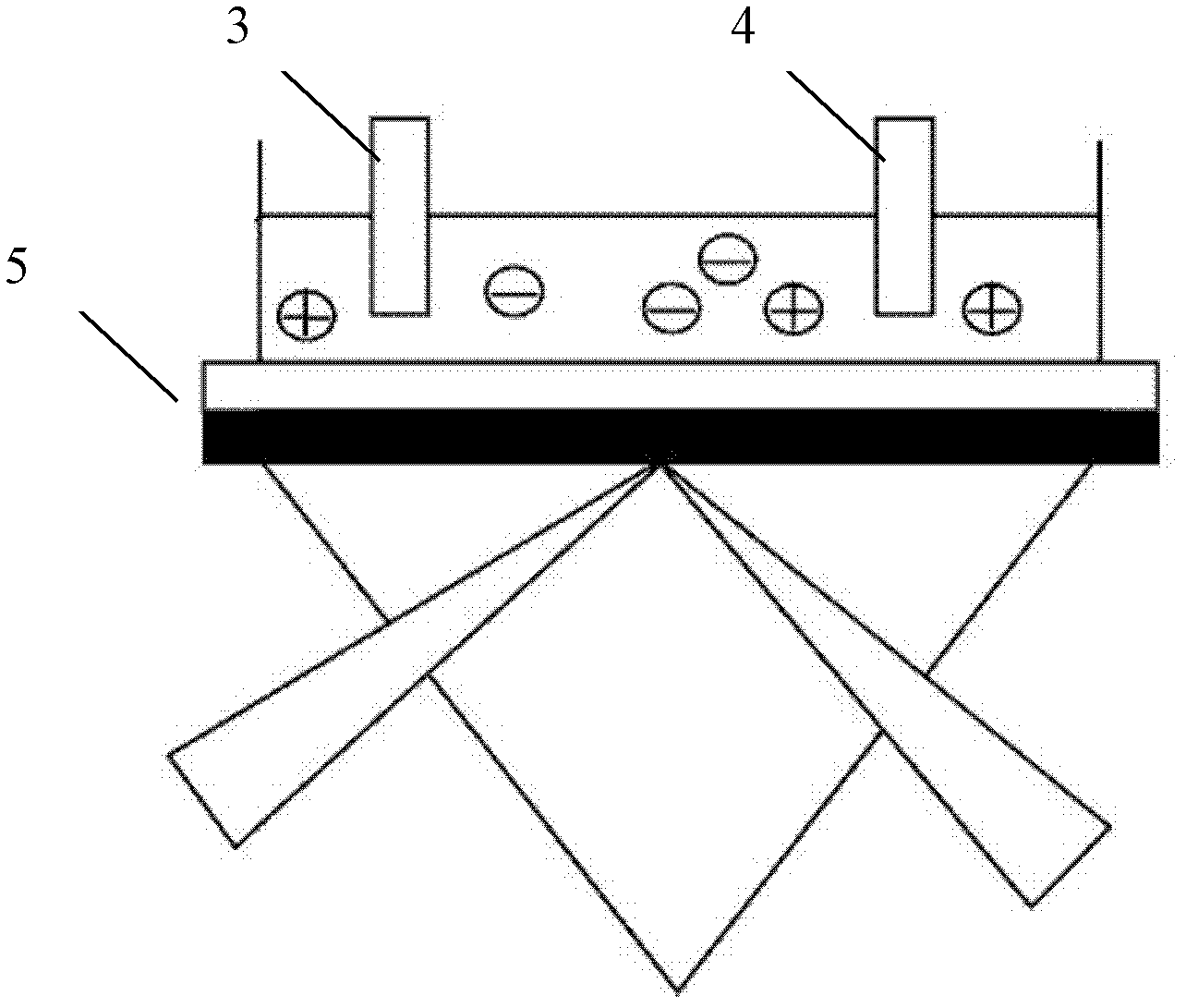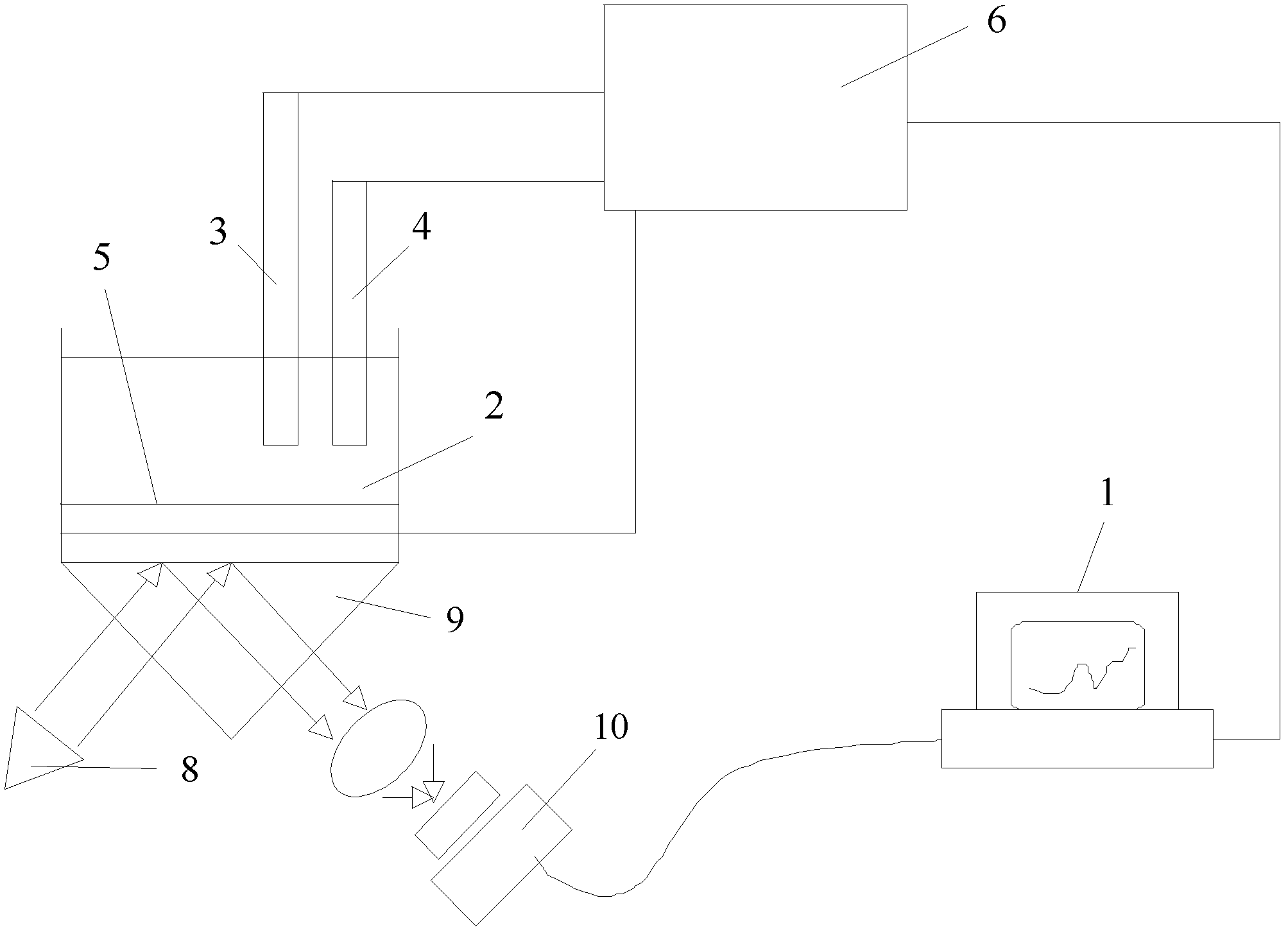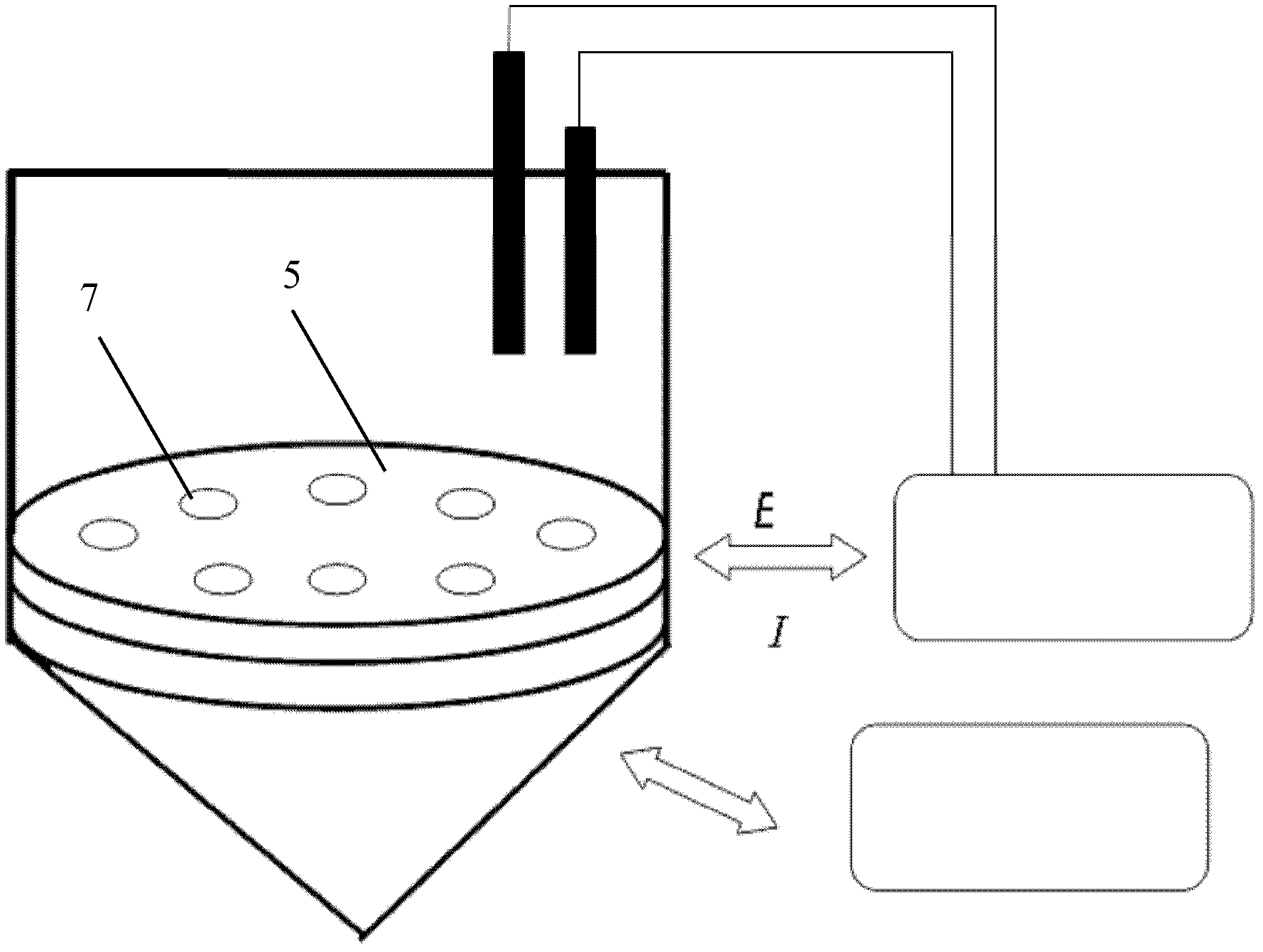ESPR-based heavy metal analyzer and analysis method thereof
An analysis method and analyzer technology, applied in the field of analytical chemistry, to achieve the effects of less detection interference, less damage, and less background interference
- Summary
- Abstract
- Description
- Claims
- Application Information
AI Technical Summary
Problems solved by technology
Method used
Image
Examples
Embodiment 1
[0045] Such as figure 1 , figure 2 , image 3 The shown heavy metal analyzer based on ESPR, chemical reaction part, surface plasmon resonance spectrometer and information processing system 1, chemical reaction part includes detection cell 2, counter electrode 3, reference electrode 4, array electrode 5 and electrochemical workstation 6 ;
[0046] The array electrode is located at the bottom of the detection pool, the counter electrode and the reference electrode are inserted into the detection pool, and the counter electrode, reference electrode, and array electrode are respectively connected to the electrochemical workstation; the electrochemical workstation and the surface plasmon resonance spectrometer are respectively connected to the information processing system;
[0047] The array electrode includes 8 active points 7, and the preparation materials of the active points can be one or more of the following: carbon fiber, glassy carbon, carbon nanotube, graphene, fullere...
Embodiment 2
[0058] In order to improve the analytical sensitivity, in the step (2) of the embodiment, the solution to be detected can be added to the detection cell, and at the same time, a process of co-plating bismuth on the array electrode is carried out: the bismuth salt is added to the detection cell; during the detection process, the heavy metal ions are first reduced Form a metal film and then oxidize and dissolve. At the same time, bismuth ions achieve reduction and reoxidize and dissolve with heavy metal ions, and the bismuth ions play a synergistic role. The in-situ bismuth-coated film of the array electrode has the advantages of high sensitivity, wide potential window, and insensitivity to dissolved oxygen. The method of co-coated bismuth film on the modified array electrode is used to measure heavy metal ions. The sensitivity is high, and a variety of heavy metal ions can be detected. Simultaneous rapid determination.
Embodiment 3
[0060] Figure 4 is a graph of the relationship between the sub-meter comparison enrichment time and the SPR signal; Figure 5 is a graph comparing the relationship between the enrichment potential and the SPR signal. Such as Figure 4 It is shown that when the enrichment time increases from 60s to 180s, the SPR signal intensity increases, and when the enrichment time continues to increase, the SPR signal intensity does not change significantly; as Figure 5 Shown Pb 2+ The SPR signal intensity increased with the enrichment potential from -0.9V to -1.3V, and when the potential was more negative, the SPR signal intensity decreased instead.
[0061] Therefore, considering the test time and sensitivity, the enrichment potential is selected as -1.3V, and the enrichment time is selected as 180s. Under this condition, the response current is the largest.
PUM
 Login to View More
Login to View More Abstract
Description
Claims
Application Information
 Login to View More
Login to View More - R&D
- Intellectual Property
- Life Sciences
- Materials
- Tech Scout
- Unparalleled Data Quality
- Higher Quality Content
- 60% Fewer Hallucinations
Browse by: Latest US Patents, China's latest patents, Technical Efficacy Thesaurus, Application Domain, Technology Topic, Popular Technical Reports.
© 2025 PatSnap. All rights reserved.Legal|Privacy policy|Modern Slavery Act Transparency Statement|Sitemap|About US| Contact US: help@patsnap.com



